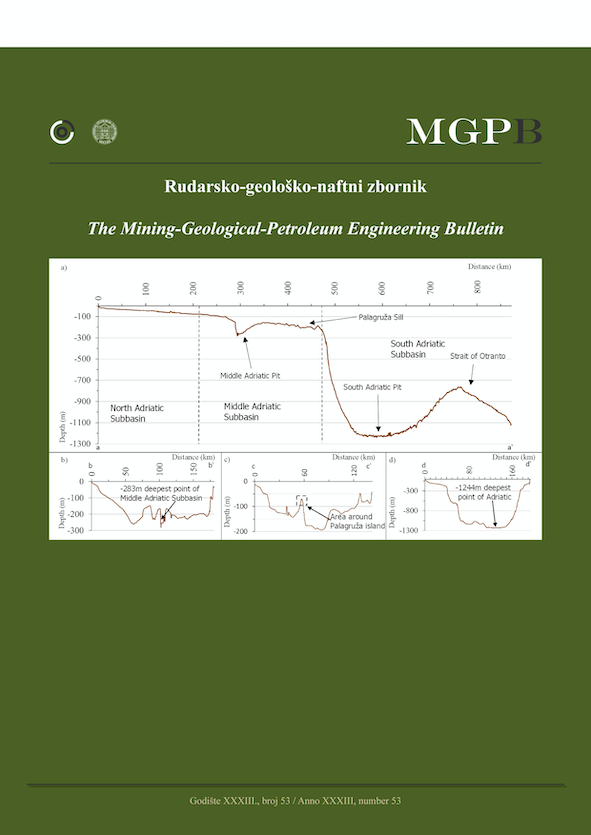Dynamics of motion of gases from a source of spontaneous combustion of coal in mine workings
DOI:
https://doi.org/10.17794/rgn.2021.2.10Keywords:
underground fires, simulation, carbon monoxide, emergency-state mine workingAbstract
The object of this paper is to study the specificity of the dynamics of carbon monoxide in mining to determine the location of the source of coal self-heating or spontaneous combustion. The Fire Dynamics Simulator software package was used to model the gas hazard of coal mine workings. Given the typical for the western coal basin of Donbas geometric dimensions of workings, properties of coal, etc., a model of a fragment of emergency mining of a coal mine was created, which allows to display geometric and physical similarity to processes in actual mine workings. The results of simulation for the studied scenarios with different air supply systems related to the detection and location of sources of self-heating or spontaneous combustion in the coal mine workings are obtained and analysed. It is established that low-density fire gases are concentrated in the vault of the workings, where they slowly dissolve in air, with the dissolution process being linear. It is revealed that air velocity up to 0.67 to 0.7 m/s contributes to formation of fire gas flows, which move towards the ventilation flow almost without mixing, which is referred to as bifurcation. Numerical parameters of fire gas dynamics in near-real conditions are established, which can become a basis for detection and location of sources of endogenous thermodynamic processes in mine workings.
Downloads
Published
How to Cite
Issue
Section
License
Copyright (c) 2021 authors and journal

This work is licensed under a Creative Commons Attribution 4.0 International License.
Creative Commons-BY
Authors who publish with this journal agree to the following terms:
In agreeing this form, you certify that:
- You read the ethical codex of the RGN zbornik available at journal web.
- You submitted work is your original work, and has not previously been published and does not include any form of plagiarism.
- You own copyright in the submitted work, and are therefore permitted to assign the licence to publish to RGN zbornik.
- Your submitted work contains no violation of any existing copyright or other third party right or any material of an obscene, libellous or otherwise unlawful nature.
- You have obtained permission for and acknowledged the source of any illustrations, diagrams or other material included in the work of which you are not the copyright owner.
- You have taken due care to ensure the accuracy of the work, and that, to the best of your knowledge, there are no false statements made within it.
- All co-authors of this submitted work are aware of, and in agreement with, the terms of this licence and that the submitted manuscript has been approved by these authors.
Publication licence
You retain copyright in your submitted work, according to journal license policy (CC-BY). By signing this form you agree that RGN zbornik may publish it under the publication licence. In summary the licence allows the following:
Anyone is free:
- To copy, distribute, display, and perform the work.
- To make derivative works.
Under the following conditions:
- The original author must always be given credit.
- The work may not be used for commercial purposes.
- If the work is altered, transformed, or built upon, the resulting work may only be distributed under a licence identical to this one.
Exceptions to the licence
In addition to publishing the work printed under the above licence, RGN zbornik will also enable the work to be visible online.
The journal editorial can change the licence rules anytime but it cannot retroactively restrict author(s) rights.


